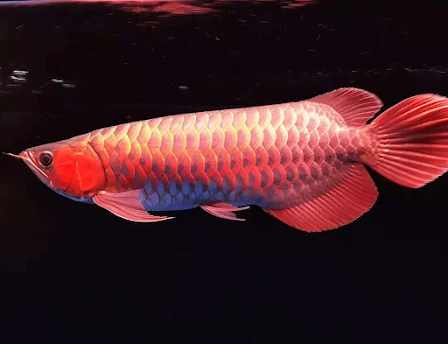History of Ancient Ornamental Fish Worldwide "Arowana"
It is no longer a secret that arowana fish is included in the class of fish that has an expensive price. This fish has a very beautiful shape. So do not be surprised if this fish is a type of ornamental fish that is much favored by ornamental fish lovers. But maybe only a few know about the history and origin of this arowana fish so that it can be found in Indonesia. For that on this occasion we will share it with you.
This ancient fish is not only called by one name. In addition to Arowana, some people also call this exotic fish by the names Arowana, aro, dragon fish, barramundi, Saratoga, pla tapad, silok, siluk, kelesa, kaleso, kalikasi, heaven, peyang, tengkuso, tangkelese, and tangkaleso.
The process of evolution of the diversity of flora and fauna continues. Arowana is one of the fauna that has followed this evolutionary process. Over the past century, this ancient fish was almost unknown. However, in 1844 two German scientists named Muller and Schlegel rediscovered the arowana fish (Scleropages sp.) because they were attracted by the beauty of their bodies. This fish is found in South America. From their research, it was stated that the fish was not yet known. Both gave the name arowana as Osteoglossum formosum. In 1913, two Dutch zoologists Max Weber and LF de Beaufort changed the name of the arowana to Scleropages formosus. The discovery of new types of arowana eggs continues. In 1966, a Japanese scientist named Kanazawa. To date,
Indonesia is a strategic country so that many foreign traders make Indonesia a trading center. And when the 16th century to the 17th century began to arrive the Europeans, who at that time was the Netherlands. And became the strongest ruler in Indonesia. This is where the evolution of various kinds of flora and fauna begins. One of them is Arowana fish or the so-called (Scleropages sp) at that time. So do not be surprised if arowana fish are included in the type of ancient fish because this species has existed for hundreds of years. But unfortunately many did not know this fish at that time. Until there were two German scientists in 1844 who began to conduct research on this fish. The two scientists, Muller and Schlegel, were attracted by the beauty of the fish they found in South America. From this research, the two named the fish Osteoglossum formosum.
However, this arapaima fish is not well known by many people until in 1913 two zoologists from the Netherlands, namely Max Weber and LF de Beaufort, changed their name to Scleropages formosus. Then this research was continued by Japanese scientists, namely Kanazawa who managed to find many types of arowana. There are at least four known genera, namely Arapaima with one species (Arapaima gigas), Osteoglossum with two species, namely Osteoglossum bicirrhosum and Osteoglossum ferreirai, then the genus Scleropages with four species, namely Scleropages formosus, Scleropages guntheri, Scleropaghes leichardti and Scleropages jardini. The last genus is Clupisudis with the single species Cluoisudis nilot.
For Indonesia itself, which is very much found to date is the type of Super Red Arowana (Scleropages formosus). And this type of Arowana will be found in rivers and lakes in Sintang, Kapuas Hulu. The rivers which are tributaries of the Kapuas River store many types of arowana, because the river or lake is not rocky and the river current is calm, not as fast as the Kapuas River. Red arowana fish (Scleropages formosus) are increasingly difficult to find in their natural habitat in Sentarum Lake, Kapuas Hulu Regency, West Kalimantan Province. Until basically and generally known that the arowana fish (Scleropages formosus) is one of the freshwater fish species from Southeast Asia.
The physical characteristics possessed by this Arowana Fish are long body size, anal fin is located far behind the body. For Asian Arowana mostly silver. And often called dragon fish which is often associated with Chinese mythology. In addition to West Kalimantan, arowana fish are also found in Sumatra, especially in the Riau and Jambi areas, but the type is Red Arowana (Golden Red Arowana) This is still a species of Scleropages formosus. The basic color of the Sumatran arowana is golden yellow on the head and tail. And the back fin is red. Arowana that many collectors are targeting is not "glazed" his lips. But the prestige is not as great as the Super Red Arowana.


